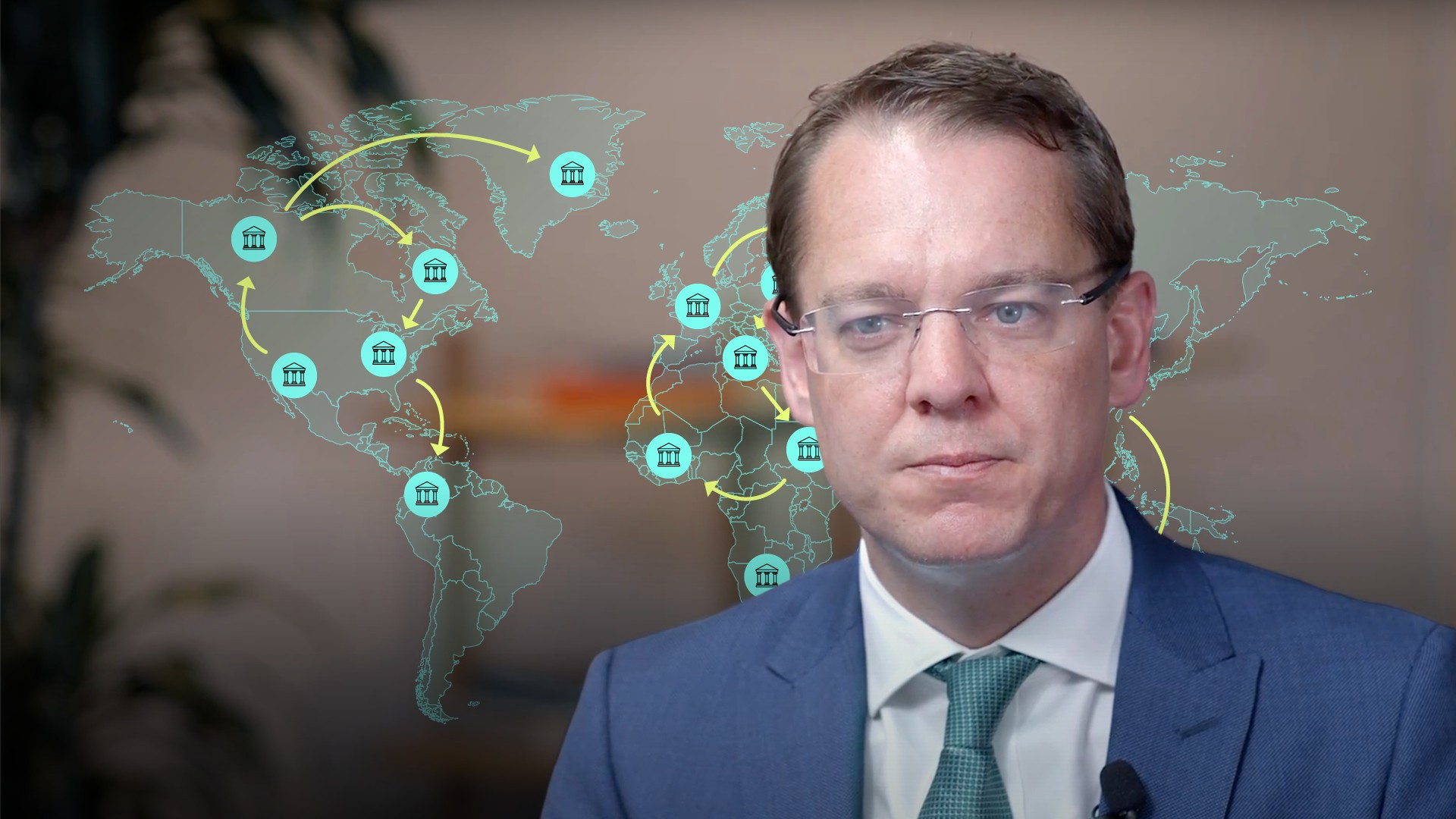
Introduction to Correspondent Banking

Robert Ellison
20 years: Capital markets & banking
All economies are dependent on international trade. As soon as companies and individuals need to trade products or services internationally, correspondent banking has a role to play. Rob goes into detail on what correspondent banking is, why it is necessary and how it impacts trade finance.
All economies are dependent on international trade. As soon as companies and individuals need to trade products or services internationally, correspondent banking has a role to play. Rob goes into detail on what correspondent banking is, why it is necessary and how it impacts trade finance.
Subscribe to watch
Access this and all of the content on our platform by signing up for a 7-day free trial.

Introduction to Correspondent Banking
18 mins 57 secs
Key learning objectives:
Define correspondent banking
Understand the two key product lines in which correspondent banks operate
Overview:
Correspondent banking is essential in today’s global economy. Whether they are assisting in transacting international payments or trade finance, banks can allow their clients the ability to operate efficiently and securely by maintaining a large network of correspondent banks.
Subscribe to watch
Access this and all of the content on our platform by signing up for a 7-day free trial.
What is correspondent banking?
‘Correspondent banking’ is a term we use when banks deal and co-operate with each other across international borders and across the globe.
Traditionally, correspondent banking teams have focussed on two key product lines:
- International payments
- Trade finance
How do clearing schemes work to facilitate domestic payments?
In the UK, clearing schemes are the payments infrastructure which is run by the central bank, the Bank of England, to allow for the safe and convenient transmission of payments between domestic banks in the United Kingdom. The payment schemes in the UK are BACS, CHAPS and Faster Payments.
The effect of payments flowing in both directions is that they actually “net off” against each-other such that the actual net flow of funds between two banks is relatively small in relation to the gross amount of payments being made. Where there is an imbalance, then the central bank corrects this by adjusting each bank’s deposit at the central bank.
Why do we need correspondent banks for international payments?
Things get more tricky when a payment crosses currency zones because we can’t rely on a domestic clearing system to facilitate the payment, and there isn’t an international central bank that can intermediate the flow of funds between two banks operating in different currency zones. No bank has access to every worldwide scheme, and most banks are members of only one domestic scheme. Some countries don’t have a central bank clearing scheme at all.
What is an example of this?
For example, if I wanted to send 50 Canadian dollars to my cousin Bradley, things get more complicated. Bradley has an account with a Canadian bank called Toronto Dominion. So what happens next? Lloyds debit the Sterling equivalent of 50 Canadian Dollars from my account, and since Lloyds have their own bank account with Toronto Dominion, Lloyds instruct Toronto Dominion to debit 50 Canadian dollars from Lloyds’ account with them, and to then credit Bradley’s account with the same 50 dollars. And the payment has therefore been made. What if Bradley’s account is not with Toronto Dominion, but instead Bradley’s account is held at a bank with whom Lloyds does not have a bank account?
This is where another correspondent bank comes into play. This time, I make my payment instruction to Bradley in exactly the same way, but instead of instructing Lloyds to send the money to an account Bradley has with Toronto Dominion, I instruct the payment to be sent to Bradley’s 'Bank of Nova Scotia' account.
Lloyds still sent the payment to Toronto Dominion and again, Lloyds instructed the 50 dollars to be deducted from their account held with Toronto Dominion. Next, instead of crediting the funds to Bradley’s account at Toronto Dominion as in the previous example, they direct the funds to Bank of Nova Scotia, most likely through one of the domestic clearing schemes which are run by an organisation called Payments Canada.
In this way the 50 dollars is eventually credited to Bradley’s account with Bank of Nova Scotia, having passed through the hands of three separate banks to get to him. In this series of transactions, Toronto Dominion is performing the role of Lloyds’ correspondent bank in Canada.
Why do we need correspondent banks in trade finance?
Virtually all economies are dependent in some way on international trade and the vast majority of world economies are heavily dependent. As soon as companies and individuals need to trade products or services internationally, then correspondent banking has a role to play. In dealing with a foreign country then a company will, in most cases, be dealing with a different currency, a different language, a different legal system for settling disputes and also not to underestimate, a different business culture.
Correspondent banking essentially allows unfamiliar companies to deal with each other with a degree of trust resulting from the fact that their banks know each other and their banks end up taking risk on their behalf.
There are many different formats that International banks use to co-operate in facilitating international trade in the real economy. These might include bid bonds, SBLCs, performance bonds and guarantees, to name just a few: these all fall under the umbrella term which we call “Trade Finance”.
Put very simply, if a small or medium sized company trades internationally, it will almost certainly have benefitted from the correspondent banking network that its own bank has established. The World Trade Organisation estimated that upwards of 80% of the 14 trillion dollars in Global trade is supported, directly or indirectly.
Subscribe to watch
Access this and all of the content on our platform by signing up for a 7-day free trial.

Robert Ellison
There are no available Videos from "Robert Ellison"



























